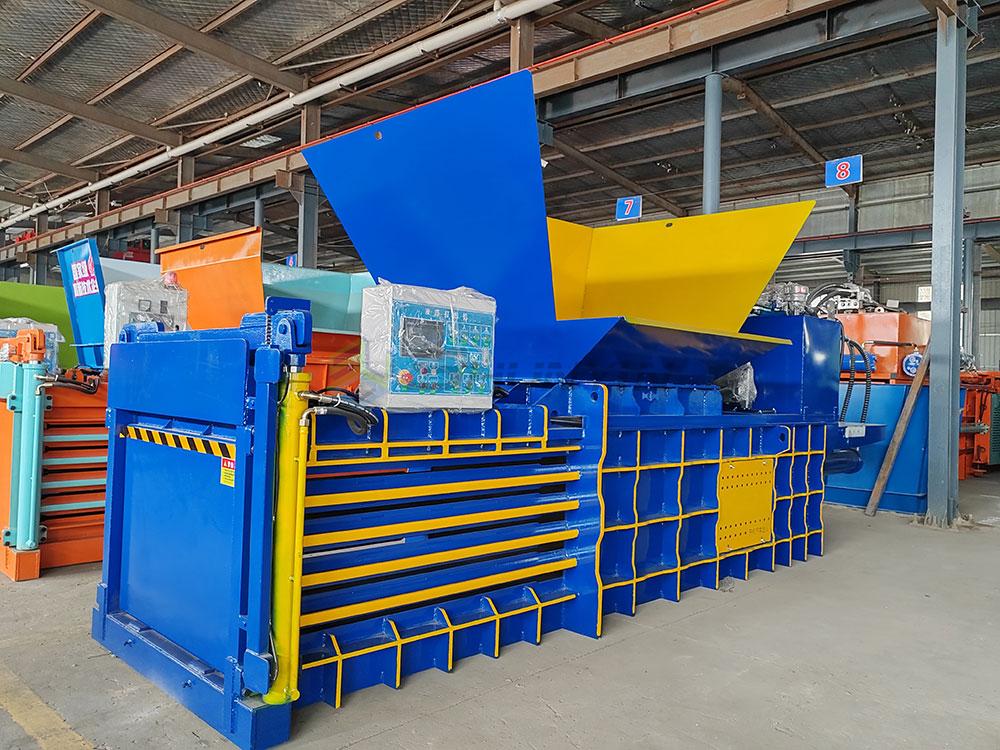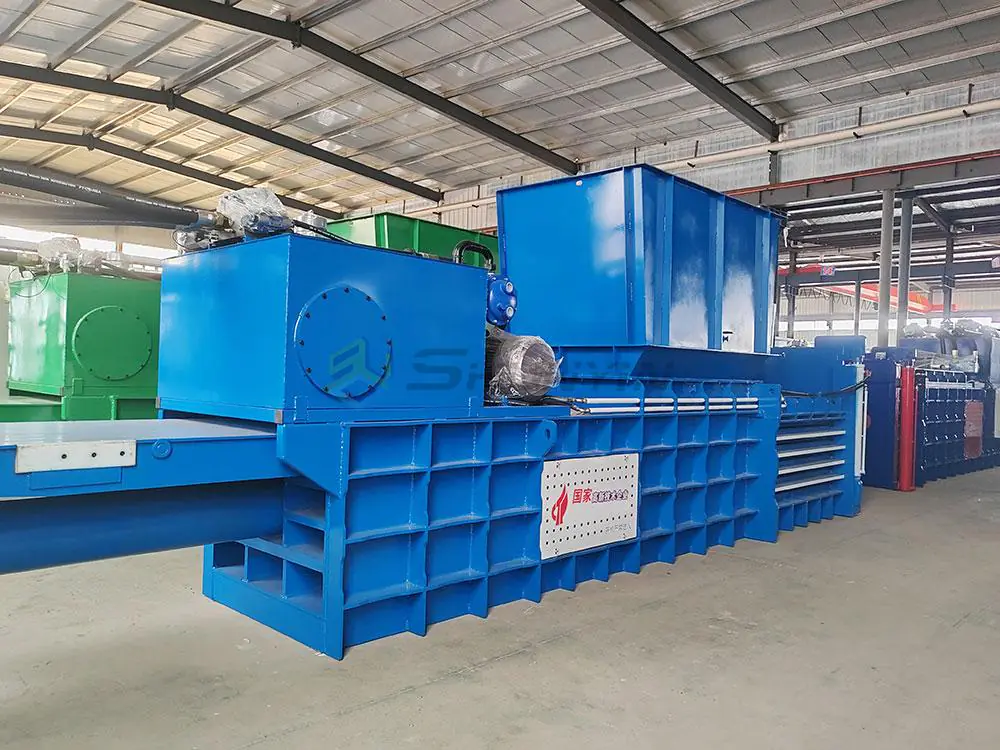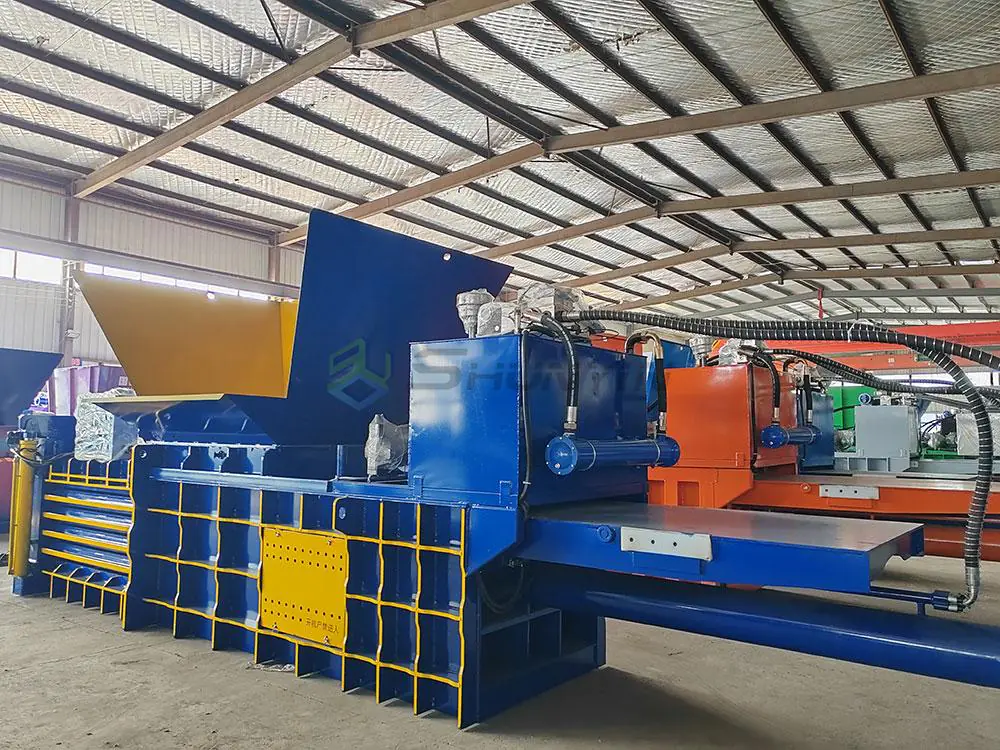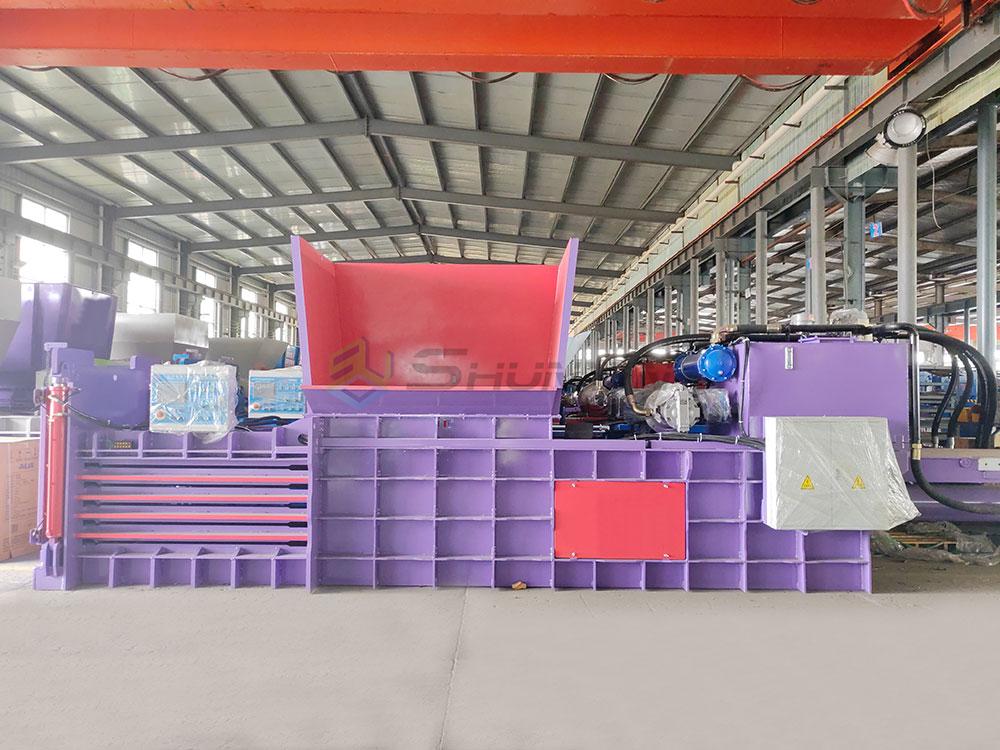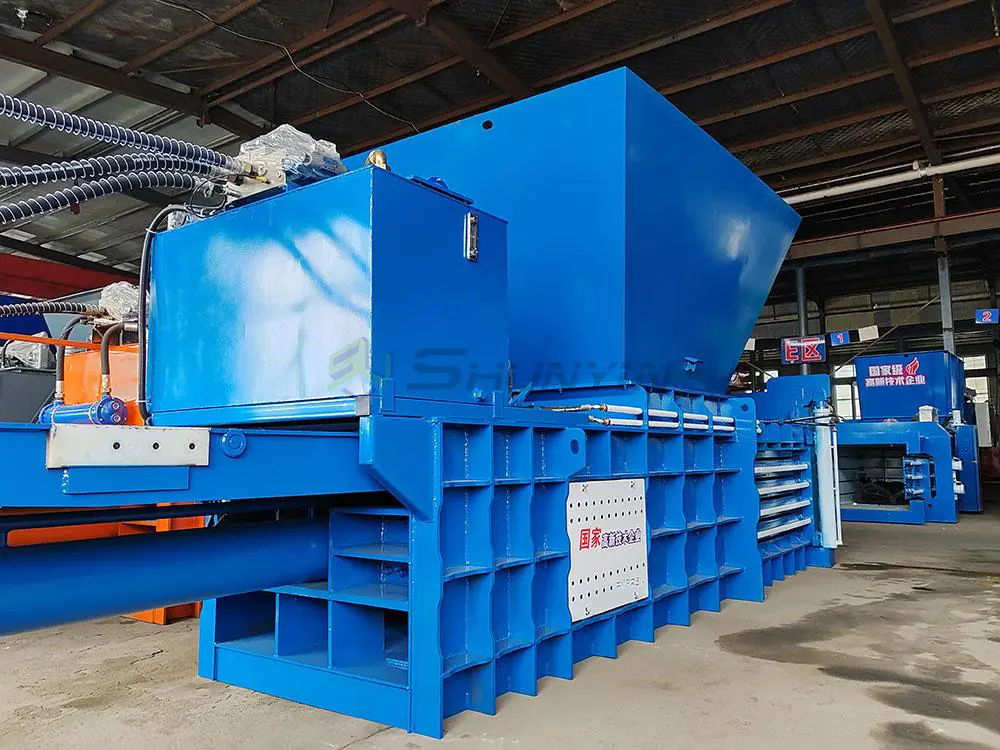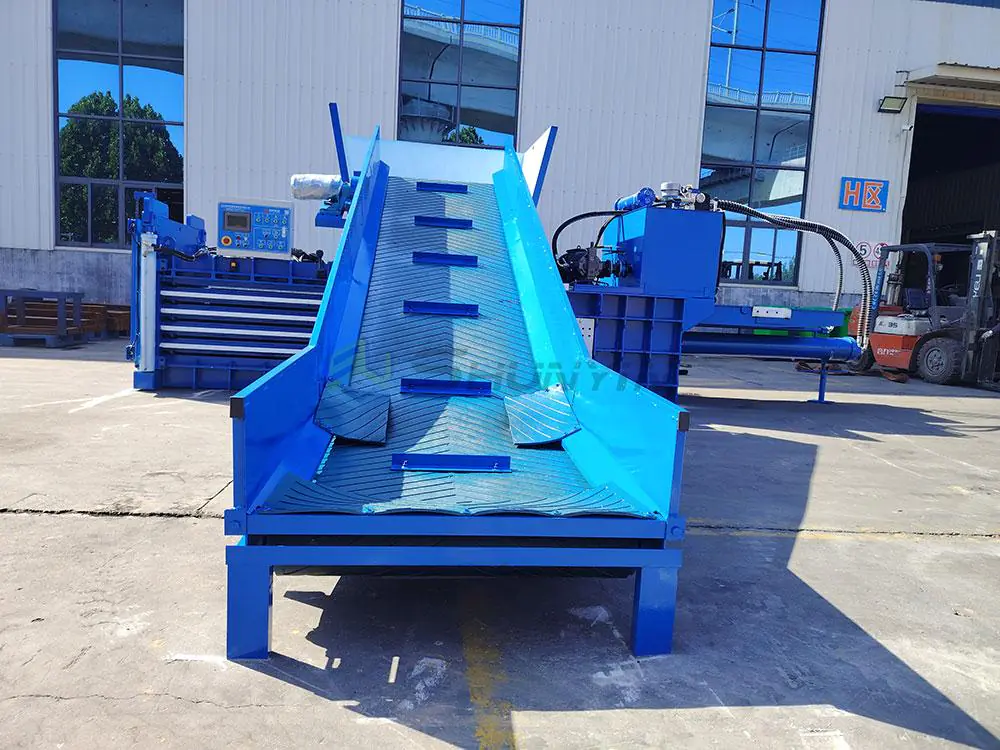Running out of workspace? Labor costs cutting profits? These compact machines conquer both challenges at once.
Semi-automatic horizontal balers provide space-efficient compaction for low-volume sites through a combination of hydraulic pressing and manual feeding, delivering factory-grade density bales while occupying 40% less floor area than full-auto systems.

Lambert doubled his recycling revenue after installing our SY-200S model. Let’s explore why manufacturers swear by them.
What is the difference between vertical and horizontal baler?
Stuck choosing between systems? Japanese recyclers boosted output 130% after switching types.
Vertical balers load materials downward with top-open chambers for low-volume sites, while horizontal balers feed waste sideways through conveyor-fed tunnels allowing continuous operation – handling 3-4x more material hourly in equivalent spaces.

Space vs throughput optimization
Singapore facilities reclaimed 70% floor space without sacrificing capacity.
Key operational contrasts
| Feature | Vertical Balers | Horizontal Balers | Advantage |
|---|---|---|---|
| Footprint | 11-16 ft² | 22-36 ft² | Vertical saves 60% space |
| Hourly Output | 0.8-1.5 tons | 2.5-5 tons | Horizontal +300% capacity |
| Manual Intervention | Every cycle | Batch processing | Horizontal reduces labor |
| Installation Cost | $5K-15K | $18K-45K | Vertical lower entry |
Lambert chose horizontal for warehouse expansion. Consult layout planning
Selection criteria
- Vertical ideal for: Small retail backrooms
- Horizontal perfect for: Distribution centers
- Semi-auto sweet spot: Growing workshops
Our experts map your site digitally. Get space analysis
What are the different types of baler machines?
Limited by single-material processing? Canadian recyclers added 6 revenue streams with versatile units.
Balers primarily categorize into vertical/horizontal orientation, fixed/chamber dimensions, manual/semi/auto operation levels, and material-specific configurations—each engineered for distinct throughput and waste stream characteristics (cardboard, foam, textile).
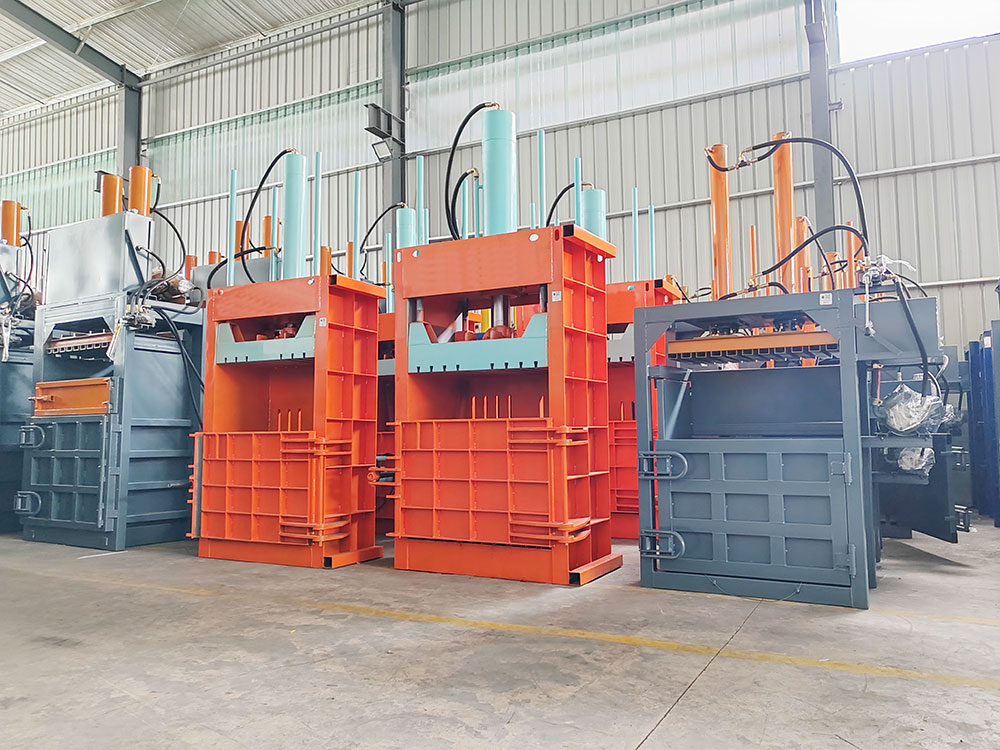
Matching machinery to waste profiles
After 400+ installations, I’ve identified common mismatch mistakes.
Application-specific optimization
| Waste Type | Recommended Baler | Density Achieved | Profit Increase |
|---|---|---|---|
| Cardboard | Semi-auto horizontal | 650-750 kg/m³ | 100-130% |
| Plastic Film | Two-ram vertical | 450-550 kg/m³ | 80% |
| Foam Waste | Loose-fill horizontal | 30:1 reduction | 200% |
| Textiles | Continuous-feed | 400 kg/m³ | 70% |
North American plants recovered costs in 9 months. Identify your match
Critical selection factors
- Daily volume: Under 1 ton = vertical
- Material variety: Horizontal = multi-stream
- Space ceiling: Low roofs limit verticals
We include material testing kits. Request sampler
How does a horizontal baler work?
Frustrated by inconsistent bales? Tokyo facilities achieved ±3% density with our pressure control.
Horizontal balers compress materials via hydraulically-driven plungers moving horizontally through enclosed tunnels: waste loaded manually or by conveyor gets compacted against pressure plates, forming uniform bales automatically strapped for removal.

Precision compression engineering
Singapore users cut material loss 18% after tuning cycle parameters.
Operating cycle phases
| Phase | Duration | Pressure Applied | Critical Components |
|---|---|---|---|
| Loading | 25-60 sec | Pre-compression | Infeed conveyor |
| Main Compression | 20-45 sec | 2000-6000 PSI | Hydraulic cylinders |
| Strapping | 15-30 sec | Holding pressure | Auto-tie mechanism |
| Ejection | 10-20 sec | Release | Pusher ram |
Lambert automated entire shifts solo. Watch operation video
Semi-auto specific features
- Manual infeed gate: Control loading rhythm
- Cycle interrupt button: Adjust mid-process
- Bale counter: Track daily output
Our SY Series includes productivity dashboards. Access interface demo
How big is a baler?
Storage concerns delaying purchase? Japanese workshops installed units in 90 sq.ft corners.
Balers range from vertical units smaller than refrigerators (5′ H × 4′ W) to industrial horizontals requiring loading docks (32′ L × 10′ W), with semi-auto horizontal models compact baling into typical dimensions of 14′ L × 6′ W × 8′ H.

Facility integration science
Canadian facilities gained 14% output through ergonomic placement.
Size-impact metrics
| Dimension | Compact Model | Standard Semi-Auto | Impact |
|---|---|---|---|
| Length | 12 ft | 16 ft | 25% space saving |
| Height | 7.5 ft | 9 ft | Clearance conflicts |
| Operation Zone | 18×12 ft | 25×18 ft | 45% area reduction |
| Bale Storage | 6-8 bales | 10-15 bales | Buffer capacity |
North American users fit balers inside delivery vans. Get site blueprint
Space optimization tactics
- Corner installation: Utilize dead spaces
- Mobile chassis: Reposition seasonally
- Overhead conveyors: Free floor area
We provide 3D layout simulations. Upload facility sketch
Conclusion
Semi-automatic horizontal balers deliver industrial compaction in space-efficient packages, revolutionizing small facility waste handling through optimized density and labor reduction.


